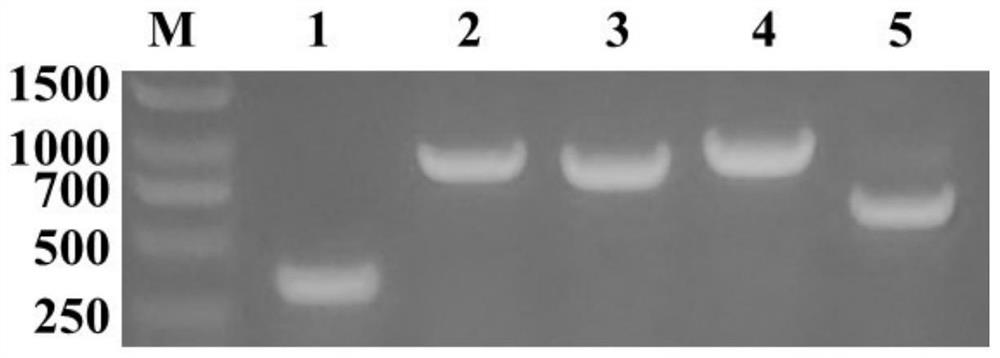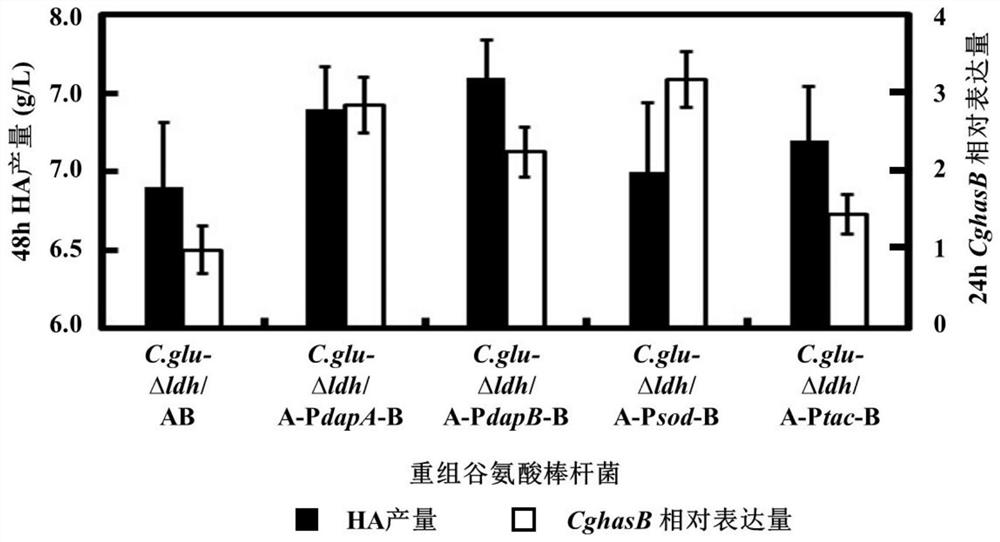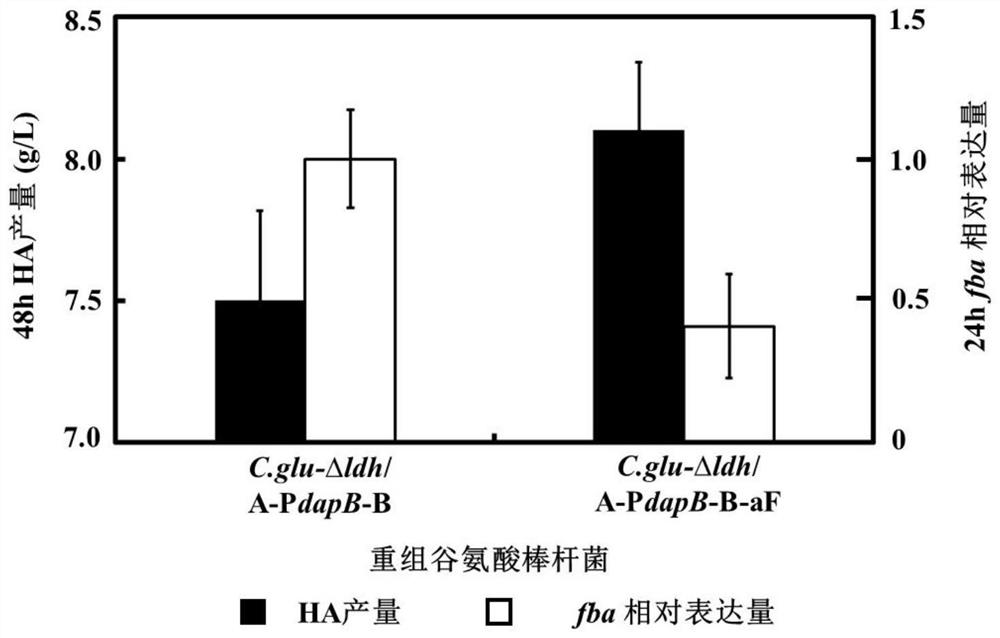A recombinant bacterium with high hyaluronic acid production and its construction method and application
A technology of hyaluronic acid and recombinant bacteria, applied in the field of genetic engineering, can solve the problems of increased production cost, pathogenicity of streptococcus, etc.
- Summary
- Abstract
- Description
- Claims
- Application Information
AI Technical Summary
Problems solved by technology
Method used
Image
Examples
Embodiment 1
[0070] Example 1 Construction of CghasB enhanced expression strains and comparison of their HA production capacity
[0071]In order to strengthen the expression of the key enzyme gene CghasB in the HA synthesis of Corynebacterium glutamicum, this embodiment carried out transformation on the basis of the recombinant plasmid PXMJ19-AB (see Chinese patent CN103937734A for details), that is, insert an extra gene between the genes shasA and CghasB promoter, so that CghasB can be simultaneously transcribed by the Ptac promoter and this additional promoter. In this embodiment, the additional promoters are selected from PdapB (the promoter of the 4-hydroxytetrahydropyridine reductase gene), PdapA (the promoter of the dihydropicoline synthase gene), Psod (the promoter of the superoxide dismutase gene promoter) and the Ptac promoter. Taking PdapB as an example, the construction method of the recombinant plasmid is as follows:
[0072] Using the genome of Corynebacterium glutamicum as ...
Embodiment 2
[0082] Embodiment 2 constructs fba weakened bacterial strain and compares its HA production capacity
[0083] On the basis of Example 1, this example further uses antisense RNA technology to weaken the reaction catalyzed by the fba gene expression enzyme in glycolysis. The genome of Corynebacterium glutamicum was used as a template, and aF-F and aF-R were used as primers for PCR reaction and purification to amplify the antisense RNA fragment of fba gene. The conditions used for PCR were the same as in Example 1.
[0084] Plasmid pXMJ19 was double digested with SalI / EcorI. The digestion product and the antisense RNA fragment of the fba gene were subjected to a Gibson ligation reaction to obtain an expression cassette plasmid containing the antisense RNA of the fba gene transcribed by the Ptac promoter, and transformed into the E.coli host bacterium TOP10 competent by the method in Example 1 cell. Using the plasmid as a template and using PaFT-F and PaFT-R as primers to carry...
Embodiment 3
[0086] Example 3 Construction of aceE weakened strain and comparison of its HA production capacity
[0087] On the basis of Example 2, this example further uses antisense RNA technology and start codon mutation to weaken the expression of pyruvate dehydrogenase gene aceE, down-regulate the tricarboxylic acid cycle, and strengthen the synthesis of HA. The genome of Corynebacterium glutamicum was used as a template, and aE-F and aE-R were used as primers for PCR reaction and purification to amplify the antisense RNA fragment of aceE gene. Then, with the method in Example 2, using PaET-F and PaET-R as primers for PCR reaction and purification, the aceE gene antisense RNA expression cassette was amplified. Plasmid pXMJ19-A-PdapB-B-aF was digested with XhoI. The digestion product and the expression cassette of antisense RNA of the aceE gene were subjected to Gibson ligation reaction to obtain the plasmid pXMJ19-A-PdapB-B-aF-aE and transformed into E.coli host strain TOP10 competen...
PUM
 Login to View More
Login to View More Abstract
Description
Claims
Application Information
 Login to View More
Login to View More - R&D
- Intellectual Property
- Life Sciences
- Materials
- Tech Scout
- Unparalleled Data Quality
- Higher Quality Content
- 60% Fewer Hallucinations
Browse by: Latest US Patents, China's latest patents, Technical Efficacy Thesaurus, Application Domain, Technology Topic, Popular Technical Reports.
© 2025 PatSnap. All rights reserved.Legal|Privacy policy|Modern Slavery Act Transparency Statement|Sitemap|About US| Contact US: help@patsnap.com



